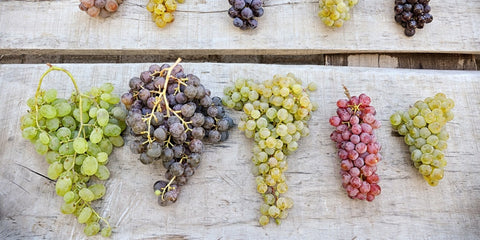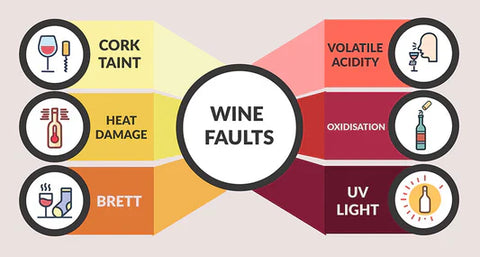Wine Tasting Notes: The Australian Way of Describing Wine
Understanding how to read and write wine tasting notes helps you better appreciate and remember the wines you enjoy. Australian wine professionals have developed their own distinctive way of describing wines, reflecting our unique terroir and wine culture. Let's explore how to understand and create wine tasting notes in the Australian context.
The Australian Approach to Wine Description
Our way of describing wine tends to be more direct and practical than the sometimes flowery European style. We focus on clear, relatable descriptions that connect with everyday experiences. This approach makes wine more accessible while maintaining professional standards.
Visual Assessment
When describing a wine's appearance, we consider:
Colour and Clarity
For red wines:
- Purple-crimson: Young Shiraz
- Ruby-garnet: Mature Cabernet
- Brick red: Aged wines
For white wines:
- Pale straw: Young Riesling
- Golden: Oaked Chardonnay
- Deep gold: Aged whites
Other Visual Aspects
We observe:
- Clarity (bright, clear, hazy)
- Viscosity (legs or tears on the glass)
- Depth of colour
- Rim variation
Aroma (Nose)
Australian wine professionals often reference local fruits and native plants in their descriptions:
Fruit Characters
Red wines might show:
- Blackberry
- Blood plum
- Mulberry
- Native pepperberry
White wines often display:
- Finger lime
- Desert lime
- Lemon myrtle
- Davidson plum
Native Australian References
Unique descriptors include:
- Eucalyptus
- Bush honey
- Wattle blossom
- Native mint
Palate Structure
We describe the wine's feel in the mouth using familiar references:
Body
Comparing to familiar drinks:
- Light as mineral water
- Medium like full-cream milk
- Full as thickened cream
Tannins
Described through texture:
- Fine as tea leaf
- Grippy as strong black tea
- Chunky as coffee grounds
Acidity
Referenced through citrus:
- Soft as mandarin
- Medium like orange
- High as native finger lime
Regional Character
Different Australian regions have their own flavour markers:
McLaren Vale
Common descriptors:
- Dark chocolate
- Black plum
- Sage
- Sea spray notes
Barossa Valley
Typical references:
- Black fruits
- Christmas cake
- Dark spices
- Rich earth
Writing Professional Tasting Notes
A structured approach to note-taking includes:
Essential Elements
- Appearance
- Nose
- Palate
- Structure
- Finish
- Overall impression
Technical Details
Include:
- Alcohol percentage
- Region
- Vintage
- Closure type
Consumer-Friendly Descriptions
Making wine accessible through:
Relatable Comparisons
Instead of writing "notes of cassis," try:
- "Smells like fresh blackberries"
- "Tastes like ripe plums"
- "Reminds me of Christmas spices"
Food Pairing Suggestions
Practical matches with local cuisine:
- Barbie favourites
- Seafood dishes
- Asian fusion
- Modern Australian
Advanced Tasting Vocabulary
Building your wine description skills:
Structure Terms
Understanding words like:
- Extract
- Phenolic ripeness
- Fruit weight
- Acid line
Winemaking Influences
Identifying:
- Oak treatment
- Malolactic fermentation
- Lees contact
- Whole bunch fermentation
Seasonal Variations
How vintage conditions affect descriptions:
Warm Years
Typical characteristics:
- Riper fruit notes
- Higher alcohol
- Fuller body
- Softer acidity
Cool Years
Common traits:
- More herbal notes
- Lower alcohol
- Higher acidity
- Lighter body
Practical Application
Tasting Strategy
- Look at the wine
- Smell without swirling
- Swirl and smell again
- Taste and assess structure
- Consider the finish
- Form overall impression
Note-Taking Tips
Effective methods:
- Use a consistent format
- Write immediately
- Compare with others
- Build a personal database
Visit Our many Cellar Doors in McLaren Vale
We encourage our McLaren Vale visitors to develop their tasting vocabulary through guided tastings. Tastings at local McLaren Vale cellar doors can help you understand the characteristics that make each wine unique and how to describe what you're experiencing.
Remember, there's no wrong way to describe wine as long as it helps you remember and communicate what you enjoy. Whether you're a beginner or an experienced taster, developing your descriptive skills enhances your wine appreciation journey.
Professional Development
For those interested in developing professional tasting skills:
Training Options
- WSET courses
- Wine Australia programs
- Regional masterclasses
- Professional tastings
Building Experience
- Join tasting groups
- Attend wine shows
- Create a tasting journal
- Participate in trade tastings
Wine description is both an art and a skill that improves with practice. The Australian way of describing wine combines technical accuracy with practical accessibility, making wine more approachable while maintaining professional standards.




Comments (0)
There are no comments for this article. Be the first one to leave a message!